Several papers and publications either authored, co-authored or edited by our Patron, Dr Scoresby Shepherd, detailed his early work regarding the study of fish cleaning behaviour in South Australian waters. These include:-
“Paradise is Underwater – Memoir of a marine biologist” (2016) by Dr Scoresby A. Shepherd AO (p.261).
“Ecology of Australian Temperate Reefs – The Unique South” (2013) edited by Scoresby Shepherd & Graham Edgar (p.369-70, 388-389).
“Cleaning symbiosis among inshore fishes at Althorpe Island, South Australia and elsewhere” (2005) by SA Shepherd, J Teale & D Muirhead, Transactions of the Royal Society of South Australia 129, 193-201.
The latter, “Cleaning symbiosis among inshore fishes at Althorpe Island, South Australia and elsewhere”, written in 2005, was published first. It was co-authored with J Teale & Dr D. Muirhead. I shall refer to it as ‘the initial study’ (or just ‘the study’) from now on.
The introduction in the initial study stated:
“Cleaning symbiosis among fishes is a common mutualism among tropical fishes in which cleaner fish benefit by feeding on ectoparasites on client species, which in turn benefit by their removal.”
It went on to state “Information on the similar temperate symbiosis is scarce, and in southern Australia is available only from the accounts of Hutchins in southwestern Australia, and brief references elsewhere . . . .”
The next publication to be published was “Ecology of Australian Temperate Reefs – The Unique South” (edited by Scoresby Shepherd & Graham Edgar). This book expanded on the above comments thus:
“Fish-cleaning symbiosis – This is undoubtedly one of the most remarkable of ecological adaptations among fish. All fish suffer from parasites that attach themselves to the scales or gills and feed on mucus or tissue from the host fish . . . . A few fish species and shrimp species have evolved to offer a parasite-cleaning service to the local fish community. The phenomenon is little known in temperate regions because it is uncommon and less predictable than in tropical waters, where parasite infection is more widespread.”
The more recent publication, “Paradise is Underwater – Memoir of a marine biologist” (2016), reads:
“Fish cleaning behaviour – All fish suffer at times from parasites that attach themselves to the scales or gills of fish and feed on their mucus or tissue. To meet this situation a remarkable mutualistic behaviour has evolved among some species of fish, involving ‘cleaners’ that happily search over the outer scales of other fish, called ‘clients’, and feed on their parasites. Most fish species suffer from infestations of parasites on their scales and within their gills, so cleaning behaviour benefits not only the sufferer, who would otherwise weaken and waste away, but also the cleaner, who gains a free feed.”
Again then, as written in the initial study, “Cleaning symbiosis* among fishes is a common mutualism** among . . . . . fishes in which cleaner fish benefit by feeding on ectoparasites on client species, which in turn benefit by their removal.”
* Symbiosis is described in “A Dictionary of Biology” by Abercrombie, Hickman & Johnson as
“1. Association of dissimilar organisms whatever the relationship between two partners.
- Association of dissimilar organisms to their mutual advantage . . . .”
Further, a symbiotic organism is called a ‘symbiont’.
** Mutualism is described in “Ecology of Australian Temperate Reefs – The Unique South” as “in which both parties enjoy reciprocal benefits”.
Many fish books discuss symbiosis one way or another. One such book is “Steve Parish Amazing Facts About Australian Marine Life” by Pat Slater. One interesting item in the book concerns trumpetfish. It seems that they will use both their odd trumpet-shape and a colour change to blend with another fish, which they use for cover. They will then sneak into a cleaning station alongside the other fish. When the opportunity arises, the trumpetfish will shoot out its expandable jaw and suck in any prey. It can swallow fish almost twice its size.
Dr Scoresby Shepherd
In each of the three papers/publications either authored, co-authored or edited by Dr Shepherd, the behaviour of South Australian cleaner fish and client species is discussed in some detail. Much of these details are based on the initial study
Dr Shepherd gave a talk about his work studying fish cleaners in SA waters to the Marine Life Society of South Australia in 2005. His talk was based on the initial study. As indicated in the initial study, Dr Shepherd said that there had been no previous systematic study of the subject in southern Australia. He told us that he had been observing five species of fish and one species of shrimp that carry out fish cleaning services at their chosen cleaning stations. He had recorded these six species of fish cleaners in SA over some twenty years. I will discuss these six species of fish cleaners further below.
During his talk to the Marine Life Society of SA, Dr Shepherd went on to speak about ‘cleaning symbiosis’. He described the fish doing the fish cleaning as ‘the cleaner’ and the fish being cleaned as ‘the client’. He suggested that cleaning involved a sensory stimulus to ‘the client’. He called this ‘tactile stimulus’, tactile meaning ‘of touch’.
Dr Shepherd then discussed all the things that any cleaner would need to run a business. Things such as a site in a good location, advertising, bold signs and clients. He suggested that ‘bold signs’ might include things like bright stripes and false eyespots (ocelli). He referred to these bold signs as ‘guild signals’. He described cleaning stations (site locations) as being ‘topographic’. He then went on to describe the various poses that client fish would adopt to indicate to the cleaner the level of cleaning that they required. He had found that the client’s pose determined the number of ‘cleaning bites’ received from cleaner fish.
He mentioned the risk of predation to fish being cleaned. He said that fish cleaning is of positive benefit to the health of a fish community. He also said that Moonlighters will clean each other. These matters will, again, be discussed further below.
The late Neville Coleman may be regarded as a pioneer regarding fish cleaning studies in Australia, particularly in tropical waters. He probably became interested in the topic a decade prior to Dr Scoresby Shepherd doing so. He discussed each of symbiosis, mutualism and cleaner fish & shrimps in his 1993 book “Australian Fish Behaviour”, but he only discussed tropical species.
Dr Shepherd himself referred to the earlier work done by JB (Barry?) Hutchins (1991) and Morton (2007) in both “Ecology of Australian Temperate Reefs – The Unique South” (2013) and “Cleaning symbiosis among inshore fishes at Althorpe Island, South Australia and elsewhere” (2005). The latter publication also referred to work done earlier in southwestern Australia and elsewhere by other people such as Edgar, Swainston, Morrison, Storrie and Kuiter.
It is interesting to note that both the western and the eastern cleaner clingfish were described in 1991 by Hutchins. This is quite recent compared to most fish species.
The first South Australian fish species that Dr Shepherd discovered cleaning other fish was the pencil weed whiting, Siphonognathus beddomei in 1985. He had witnessed fish cleaning by this species some 16 times up to the year 2000.
A pencil weed whiting
(Taken by Steve Reynolds)
Slide number 1252 from our Photo Index features a Pencil Weed Whiting, which seems to be cleaning a male Rainbow Cale, Odax acroptilus at Moana Reef in January 1999.
The other four South Australian fish species that he had recorded cleaning other fish up to 2005 were:
Moonlighter, Tilodon sexfasciatus
Western cleaner clingfish, Cochleoceps bicolor
Blackspotted wrasse, Austrolabrus maculatus (only seen cleaning at Rapid Bay jetty)
Old wife, Enoplosus armatus
The one species of fish cleaning shrimp known in South Australia is Periclimenes aesopius, (a species of Pontoniine (commensal) shrimp) but, up to 2005, no observations on its cleaning had ever been made.
According to “A Field Guide to Crustaceans of Australian Waters” by Diana Jones and Gary Morgan, there are several species of Pontoniine shrimp and three species of Periclimenes shrimp are named.
We will now discuss the five cleaner fish and one cleaner shrimp in detail.
A school of pencil weed whiting
(Taken by Steve Reynolds)
Pencil weed whiting, Siphonognathus beddomei
These fish have been seen cleaning rainbow cale, zebra fish, magpie perch, bluethroated wrasse, spiny-tailed leatherjacket, senator wrasse, Maori wrasse and red mullet.
Moonlighter
(Taken by Steve Reynolds)
Moonlighter, Tilodon sexfasciatus
Moonlighters seen cleaning fish in Mooring Bay were all juvenile fish. They set up their business in a small cave. They were seen cleaning zebra fish, magpie perch, blue groper, bluethroated wrasse, old wives and silver drummer. They have also been seen cleaning other moonlighters.
Western cleaner clingfish
(Taken by Steve Reynolds at Rapid Bay jetty in December 2011)
Western cleaner clingfish, Cochleoceps bicolor
These fish seem to be full-time cleaners, cleaning fish at all times of day. They have been seen cleaning zebra fish, blue devils, dusky morwong, western blue groper, boarfish, spotted boarfish, harlequin fish, red mullet, spiny-tailed leatherjacket, bullseyes and magpie perch.
A black-spotted wrasse
(Taken by Steve Reynolds at Rapid Bay jetty in January 2018)
Black-spotted wrasse, Austrolabrus maculatus
These fish have only been seen cleaning blue groper, red mullet, dusky morwong and zebra fish (all at Rapid Bay jetty).
Old wife, Enoplosus armatus
These fish have only been seen cleaning blue groper.
An old wife
(Taken by Steve Reynolds)
Cleaner shrimp, Periclimenes aesopius
These shrimps have been seen cleaning a toadfish and a leafy seadragon.
A leafy seadragon
(Taken by Steve Reynolds)
The initial study stated that 23 client fish species were recorded during the study concerned. Those client fish species were listed in Table 1 in the paper. They were: –
- Zebra fish, Girella zebra
- Magpie perch, Cheilodactylus nigripes
- Bluethroated wrasse, Notolabrus tetricus
- Spiny-tailed leatherjacket, Acanthaluteres brownie
- Rainbow cale, Odax acroptilus
- Senator wrasse, Pictalabrus laticlavius
- Maori wrasse, Opthalmolepis lineolate
- Red mullet, Upeneichthys vlamingii
- Silver drummer, Kyphosus sydneyanus
- Blue groper, Achoerodus gouldii
- Old wife, Enoplosus armatus
- Moonlighter, Tilodon sexfasciatus
- Dusky morwong, Dactylophora nigricans
- Harlequin fish, Othos dentex
- Boarfish, Pentaceropsis recurvirostris
- Spotted boarfish, Paristiopterus gallipavo
- Scaly fin, Parma victoriae
- Blue devil, Paraplesiops meleagris
- Bullseye, Pempheris multiradiata
- Leafy seadragon, Phycodurus eques
- Toadfish species (Family Tetraodontidae)
But that list only covers 21 species. It seems that both sea sweep, Scorpis aequipinnis, and horseshoe leatherjacket, Meuschenia hippocrepis, should be included in the list, making the total 23 species (assuming that only one single toadfish species is listed).
I will discuss each of these species a little later.
As discussed earlier, Dr Shepherd had said that any cleaner would need things such as a site in a good location, advertising, bold signs and clients to run a business. He suggested that ‘bold signs’ might include things like bright stripes and false eyespots (ocelli). He referred to these bold signs as ‘guild signals’. Moonlighters, Western Cleaner Clingfish and Old Wife certainly have bold stripes. Pencil Weed Whiting have ocelli, as do juvenile Moonlighters. Western Cleaner Clingfish just have very prominent eyes. Blackspotted Wrasses have numerous blackish spots on the head and body. Females and juveniles also have a white bar and a white-edged black spot on the caudal peduncle (just before the tail).
The final discussion in the initial study stated, “Guild signs, in the form of conspicuous transverse stripes, are conspicuous in the moonlighter, the western cleaner clingfish, and the old wife, but not the pencil weed whiting, which is a uniform green colour. However, another possible guild sign is the false eyespot, present in small moonlighters, old wives, black-spotted wrasse and female pencil weed whiting. The last species also has very conspicuous eyes, which may serve the same function.”
Dr Shepherd described cleaning stations (site locations) as being ‘topographic’. The final discussion in the initial study stated, “In this study, cleaner stations, when present, had well-characterised topographies, close to rock outcrops or vertical walls, or specific sponge or ascidian habitats where cleaners variously resided.”
Dr Shepherd had described the various poses that client fish would adopt to indicate to the cleaner the level of cleaning that they required. The initial study stated, “The posing position of the client fish varied within and between species, and also according to the cleaner species. Typically, the client fish lay motionless, dorsal side uppermost, and with fins erect or extended. Some client species posed inclined with head upward at various angles, whilst other species posed mainly horizontally. In the presence of a western cleaner clingfish or a pencil weed whiting, the client fish often opened it mouth and gills.”
Dr Shepherd went on to describe cleaning situations observed at different sites. He also:
Found that the client’s pose determined the number of ‘cleaning bites’ received from cleaner fish,
Mentioned the risk of predation to fish being cleaned,
Said that fish cleaning is of positive benefit to the health of a fish community,
Said that Moonlighters will clean each other.
Moonlighter
(Taken by Steve Reynolds)
I will now discuss each client fish species individually, according to details found in the initial study.
Zebra fish, Girella zebra
Zebra fish at Althorpe Island “that posed at an angle head up received more attention from cleaners than those that posed horizontally”. “Those that posed in small host groups received more attention than those in larger groups”.
A solitary zebra fish in a cleaning position
(Taken by Steve Reynolds)
At West Island, “a small school of zebra fish arrived at the cleaning station”, which was at “the junction of Amphibolis Antarctica seagrass beds and a rock wall”. They “hovered in the vicinity of the cleaning station. Client fish variously posed horizontally, inclined or vertically, while others swam slowly or hovered nearby. Cleaners then emerged from the seagrass and swam about a host, searching for and apparently picking ectoparasites from its flanks.”
A school of zebra fish
(Taken by Steve Reynolds)
“The client(s) initiated cleaning four times, by posing first and waiting for cleaners to emerge, and on one occasion the cleaner approached a hovering fish.”
“At West Island, schools of zebra fish often arrived at specific points in their ranges at about the same time of day.”
“Over the two years, 84% of the fishes cleaned, or posing for cleaning, were zebra fish . . . The zebra fish variously adopted all poses, although the head down pose was rare, occurring on only 1.2% of occasions.”
According to Althorpe Island data, re zebra fish, “While an inclined pose overall attracted greater cleaning attention, the number of fishes in a client group during a cleaning event was also an important modifying factor. For small client group sizes of one or two, the probability of cleaner attention was higher, and hence the benefits of inclined posing for attention were less, and the incidence of such poses was relatively low. For client groups of five or more, only a minority adopted an inclined posed (?), of which 96% received cleaner attention, consistent with the hypothesis that the rewards for inclined posing were high. We hypothesize that inclined posing imposes an increased risk of predation, especially at sites frequented by seals, and hence inclined posing mainly occurs when there is competition for cleaner attention and the rewards of ectoparasite removal are substantial.”
According to Table 1 in the initial study, zebra fish were seen being cleaned by moonlighters, pencil weed whiting, western cleaner clingfish and blackspotted wrasse.
Magpie perch at Carrickalinga
(Taken by Steve Reynolds in January 2018)
Magpie perch, Cheilodactylus nigripes
“The magpie perch mainly . . . always posed horizontally”
A photo in the initial study paper shows a magpie perch “being cleaned on the flank by a western cleaner clingfish”.
According to Table 1 in the initial study, magpie perch were seen being cleaned by moonlighters, pencil weed whiting and western cleaner clingfish.
A magpie perch being cleaned by a western cleaner clingfish
(Taken by Steve Reynolds at Rapid Bay jetty in April 2017)
Bluethroated wrasse, Notolabrus tetricus
At West island, a bluethroated wrasse occasionally paused near zebra fish being cleaned, or was pursued by a cleaner, but cleaning was only observed once.
A blue-throated wrasse (in cleaning position?)
(Taken by Steve Reynolds at Port Noarlunga in October 2017)
“the blue-throated wrasse mostly (posed) horizontally, but sometimes inclined head up”
According to Table 1 in the initial study, bluethroated wrasse were seen being cleaned by pencil weed whiting and moonlighters.
Spiny-tailed leatherjacket, Acanthaluteres brownie
According to Table 1 in the initial study, spiny-tailed leatherjackets were seen being cleaned by pencil weed whiting and western cleaner clingfish.
Rainbow cale, Odax acroptilus
A photo in the initial study paper shows a rainbow cale “posing for a pencil weed whiting, approaching from the rear”.
According to Table 1 in the initial study, rainbow cale were seen being cleaned by pencil weed whiting.
Senator wrasse
(Taken by Steve Reynolds)
Senator wrasse, Pictalabrus laticlavius
According to Table 1 in the initial study, senator wrasses were seen being cleaned by pencil weed whiting.
Maori wrasse, Opthalmolepis lineolate
According to Table 1 in the initial study, Maori wrasse were seen being cleaned by pencil weed whiting.
Red mullet
(Taken by Steve Reynolds)
Red mullet, Upeneichthys vlamingii
According to Table 1 in the initial study, red mullet were seen being cleaned by pencil weed whiting, black-spotted wrasse and western cleaner clingfish.
Silver drummer
(Taken by Steve Reynolds)
Silver drummer, Kyphosus sydneyanus
“the silver drummer . . . always posed horizontally”
According to Table 1 in the initial study, silver drummer were seen being cleaned by moonlighters.
Silver drummer
(Taken by Steve Reynolds)
Blue groper, Achoerodus gouldii
“blue groper . . . always posed horizontally”
A photo in the initial study paper shows a western blue groper “posing for cleaning by a group of small, almost transparent, western cleaner clingfish”.
According to Table 1 in the initial study, blue gropers were seen being cleaned by old wives, moonlighters, black-spotted wrasse and western cleaner clingfish.
Old wives (with some silver drummer)
(Taken by Steve Reynolds)
Old wife, Enoplosus armatus
Old wives are sometimes called ‘zebrafish’, but they should not be confused with zebra fish.
According to Table 1 in the initial study, old wives were seen being cleaned by moonlighters.
A moonlighter
(Taken by Steve Reynolds)
Moonlighter, Tilodon sexfasciatus
“the moonlighter posed nose down”
According to Table 1 in the initial study, moonlighters were seen being cleaned by other moonlighters.
A dusky morwong
(Taken by Steve Reynolds at Port Noarlunga jetty in October 2017)
Dusky morwong, Dactylophora nigricans
According to Table 1 in the initial study, dusky morwongs were seen being cleaned by western cleaner clingfish and black-spotted wrasse.
Harlequin fish, Othos dentex
A photo in the initial study paper shows a harlequin fish “being cleaned on the flank by a western cleaner clingfish”.
According to Table 1 in the initial study, harlequin fish were seen being cleaned by western cleaner clingfish.
Boarfish, Pentaceropsis recurvirostris
According to Table 1 in the initial study, boarfish were seen being cleaned by western cleaner clingfish.
Spotted boarfish, Paristiopterus gallipavo
A photo in the initial study paper shows a spotted boarfish “posing for cleaning by western cleaner clingfish”.
According to Table 1 in the initial study, spotted boarfish were seen being cleaned by western cleaner clingfish.
Juvenile scaly fin
(Taken by Steve Reynolds at Carrickalinga in January 2018)
Scaly fin, Parma victoriae
According to Table 1 in the initial study, scaly fin were seen being cleaned by western cleaner clingfish.
An adult scaly fin
(Taken by Steve Reynolds)
Blue devil, Paraplesiops meleagris
A photo in the initial study paper shows a blue devil “being cleaned on the left flank by a western cleaner clingfish”.
Blue devil
(Taken by Steve Reynolds)
According to Table 1 in the initial study, blue devils were seen being cleaned by western cleaner clingfish.
A school of bullseyes
(Taken by Steve Reynolds)
Bullseye, Pempheris multiradiata
According to Table 1 in the initial study, bullseyes were seen being cleaned by western cleaner clingfish.
Leafy seadragon
(Taken by Steve Reynolds)
Leafy seadragon, Phycodurus eques
According to Table 1 in the initial study, a leafy seadragon was seen being cleaned by a cleaner shrimp, Periclimenes aesopius.
Toadfish species (Family Tetraodontidae)
According to Table 1 in the initial study, a toadfish was seen being cleaned by a cleaner shrimp, Periclimenes aesopius.
Sea sweep, Scorpis aequipinnis, were said to have “occasionally posed, but were never observed being cleaned”.
Horseshoe leatherjacket, Meuschenia hippocrepis, were said to have “on occasions joined a group of client species, but never posed, and sometimes disrupted the event”.
Horseshoe leatherjackets at Port Noarlunga reef
(Taken by Steve Reynolds in October 2017)
(Although sea sweep & horseshoe leatherjackets were not listed in Table 1, they were both mentioned in the initial study.)
There is a nice little section in Neville Coleman’s book “Australian Fish Behaviour” about cleaner fish and shrimps. It raises the following questions, which may be applied to SA fish cleaners: –
How many species are full-time, part-time or opportunistic cleaners and which species are they?
Does cleaning occur during the day or the night and by which species?
What signals are used by different cleaners and clients wishing to engage in a cleaning situation?
What signals are used by different cleaners and clients wishing to terminate a cleaning situation?
How do the different cleaners and clients learn to interpret these signals?
What routines do the cleaners and clients go through during a cleaning situation?
What kind of location and situation do cleaners and clients favour?
Which species of clients do the different cleaners prefer?
Which species of cleaner do the different clients prefer?
Do any fish species mimic any of our SA cleaner fish species?
In his book “Coastal Fishes of South-eastern Australia”, Rudie Kuiter says that Western Cleaner Clingfish have been “Regularly observed cleaning other fishes, probably feeding on small parasites”. He also says that the fish that the Eastern Cleaner Clingfish, Cochleoceps orientalis have been observed cleaning most often include boxfishes, porcupine fishes and morwongs. Rudie also said in his book that Pencil (or Long-nose) Weed Whiting were “occasionally observed cleaning other fishes”.
The activities of Cleaner Wrasse, Labroides dimidiatus are described in detail in Rudie’s book as follows: –
“Specialised feeders, picking parasites off or attending to wounds of other fishes. Individuals choose strategic point on reef, often cave or elevated part of reef, to which other fishes come for service. Such places are called cleaning stations. . . Large predators (are) common customers. They assist by spreading their fins and opening mouth to allow wrasses to clean teeth and gill rakers, often by swimming through mouth and gills. Unfamiliar or new visitors (are) greeted with up-and-down dance-like motion which appears to assure safety of Cleaner Wrasse”.
The False Cleanerfish, Aspidontus taeniatus is also discussed in the book. These imposters feed “by biting unsuspecting prey, taking mainly bits of fin; more experienced fishes learn to recognize the imposter and often chase it”. It is interesting to note that the False Cleaner fish (1834) was described some five years before the Cleaner Wrasse (1839).
We hear that tropical anemonefish, or clown fish, form a relationship with sea anemones. We also hear how each fish becomes immune to the stinging tentacles of the anemone by first receiving minor stings, adopting a particular swimming posture, and producing a protective mucous coating. But what about shrimps which live on sea anemones? How do they manage this? Neville Coleman’s book “Australian Fish Behaviour” says that some shrimps, such as Holthuis’ commensal shrimp, Periclimenes holthuisi, live amongst sea anemones. Holthuis’ commensal shrimps in anemones display as fish cleaners. It seems that they will lure clients well within contact of the anemone’s tentacles, yet the clients are not harmed at all. Small fish have been observed hovering amongst the stinging tentacles while being cleaned by the shrimp. Although the fish must be quite careful around the anemone, the anemone makes no attempt to sting the fish at all.
CLEANER FISH & CLEANING STATIONS
According to the web page found at https://rollingharbour.com/2014/07/08/taken-to-the-cleaners-reef-fish-cleaning-stations/ , “A cleaning station is a place where fish and other aquatic life congregate to be cleaned. This involves the removal of parasites both externally and internally, and is be performed by various creatures including, on the coral reefs of the Bahamas, cleaner shrimps and various species of cleaning fish such as wrasses and gobies. The process conveniently benefits both the cleaned and the cleaner.”
Wayne Leifert took this photo of a western cleaner clingfish cleaning a gulf gurnard perch: –
A Western cleaner clingfish cleaning a gulf gurnard perch, Neosebastes bougainvillii
(Taken by Wayne Leifert at the Northern outer reef, near Glenelg on 23/12/17)
An early paper (source unknown) discussing cleaner fish stated that “Scientists studying cleaner fish also found that certain cleaner fish had distinct preferences for cleaning certain species of fish and the different host fish knew which cleaner fish to visit if it wanted to be cleaned. One cleaner fish was observed to only clean goatfish while another only serviced the damsel fish.” The same paper also discussed sex change in cleaner fish and mimicry.
A dusky morwong
(Taken by Steve Reynolds)
My thanks go to David Muirhead for his assistance with this article. David has written several articles on the topic of fish cleaning over the years. He continues to investigate ‘fish cleaning behaviour’ in South Australian waters and I look forward to seeing the results of some of his findings from time to time.
David Muirhead searching for more fish cleaning subjects
(Taken by Steve Reynolds)
A reef without cleaners will lose fish & not attract new ones.
Therefore, cleaners are vital to the health of a reef.
Therefore, we need to ensure the survival of cleaners.
A diver photographing a school of old wives
(Taken by Steve Reynolds)
REFERENCES:
“Paradise is Underwater – Memoir of a marine biologist” (2016) by Dr Scoresby A. Shepherd AO.
“Ecology of Australian Temperate Reefs – The Unique South” (2013) edited by Scoresby Shepherd & Graham Edgar.
“Cleaning symbiosis among inshore fishes at Althorpe Island, South Australia and elsewhere” (2005) by SA Shepherd, J Teale & D Muirhead, Transactions of the Royal Society of South Australia 129, 193-201 (https://www.researchgate.net/profile/Scoresby_Shepherd/publication/286782723_Cleaning_symbiosis_among_inshore_fishes_at_Althorpe_Island_South_Australia_and_elsewhere/links/5694493f08ae820ff072bd59/Cleaning-symbiosis-among-inshore-fishes-at-Althorpe-Island-South-Australia-and-elsewhere.pdf?origin=publication_detail )
“Steve Parish Amazing Facts About Australian Marine Life” by Pat Slater.
“A Field Guide to Crustaceans of Australian Waters” by Diana Jones and Gary Morgan.
“Australian Fish Behaviour” by Neville Coleman.
“Possible_Cases_of_Cleaning_Symbiosis_Among_Freshwater_Fishes” https://www.researchgate.net/publication/254327968_Possible_Cases_of_Cleaning_Symbiosis_Among_Freshwater_Fishes?ev=pubitem-pro_rel_pub

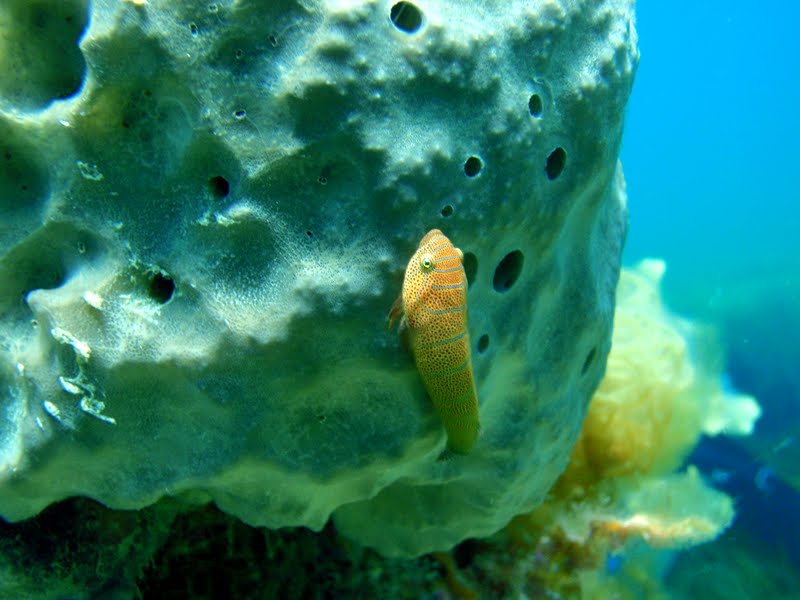

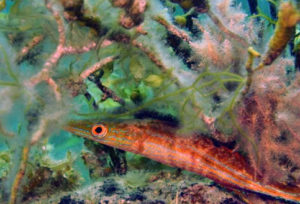
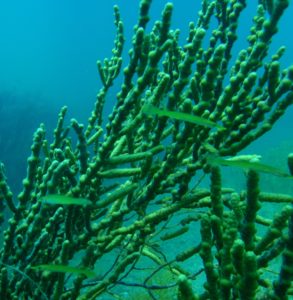
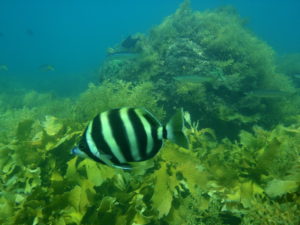
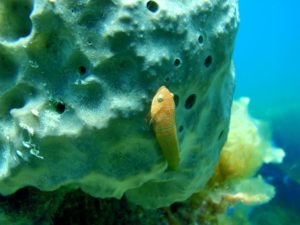
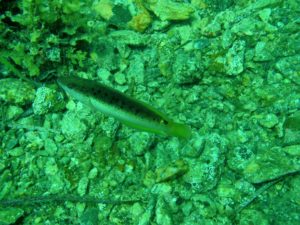
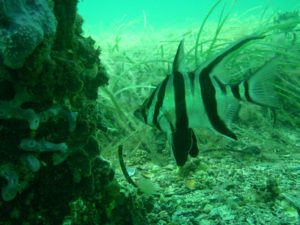
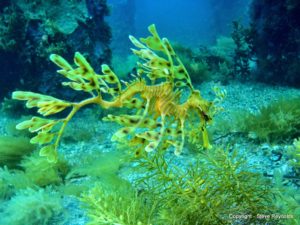
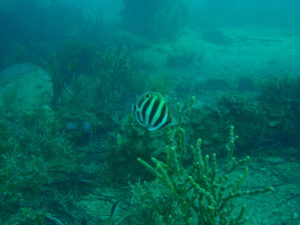
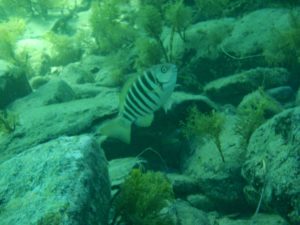
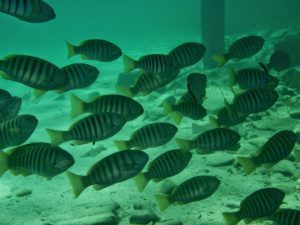
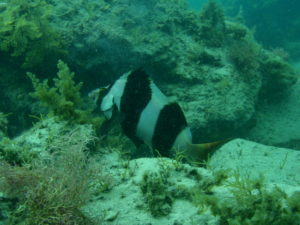
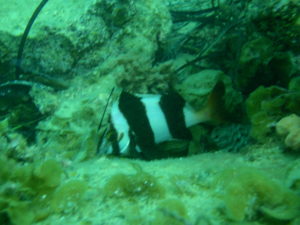
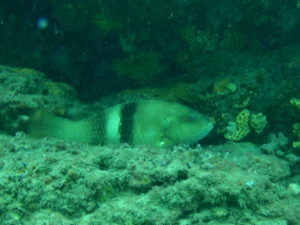
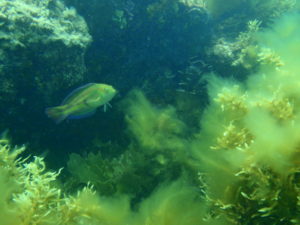
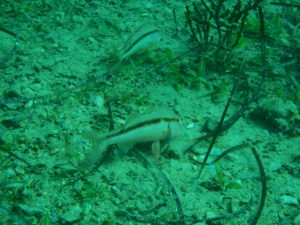
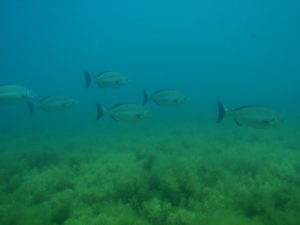
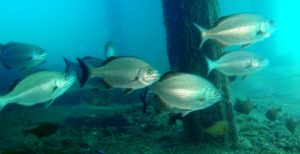
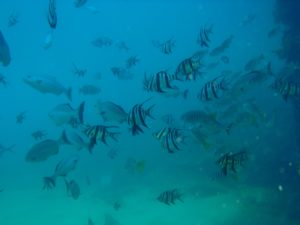
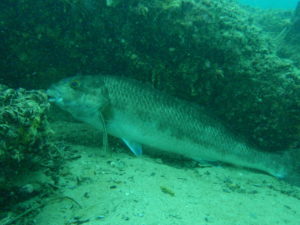
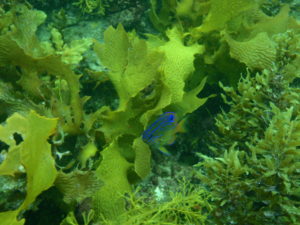
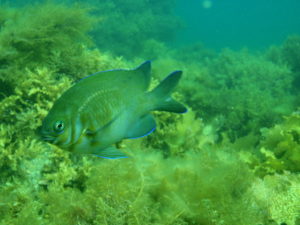
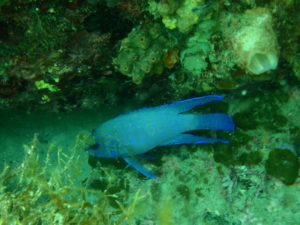
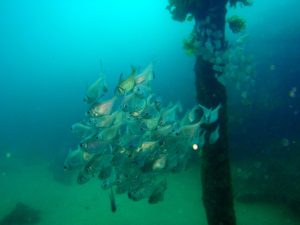
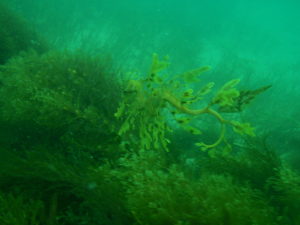

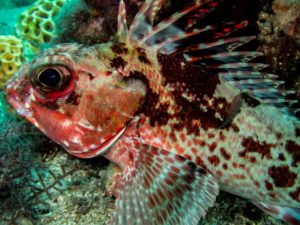
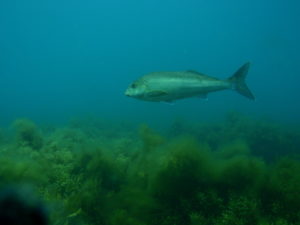
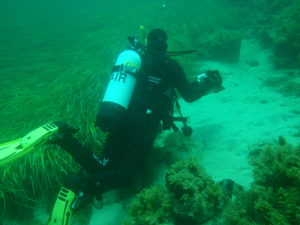
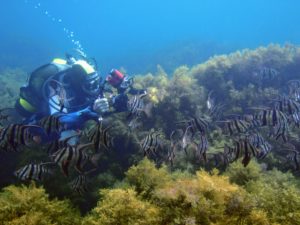
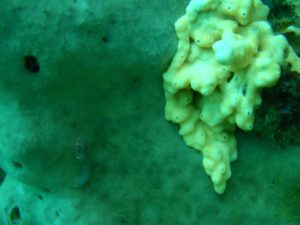
A most interesting article. Glad to be a very small part of it – thank you for the link to my own article! RH
Thanks, you’re welcome!
thanks for the acknowledgement on my photo 🙂
You’re welcome, thanks Wayne
[…] “The Colours of Fish”. I have written a few articles on the subject since then, including The study of fish cleaning behaviour in South Australian waters. That article also makes mention of symbiosis and […]